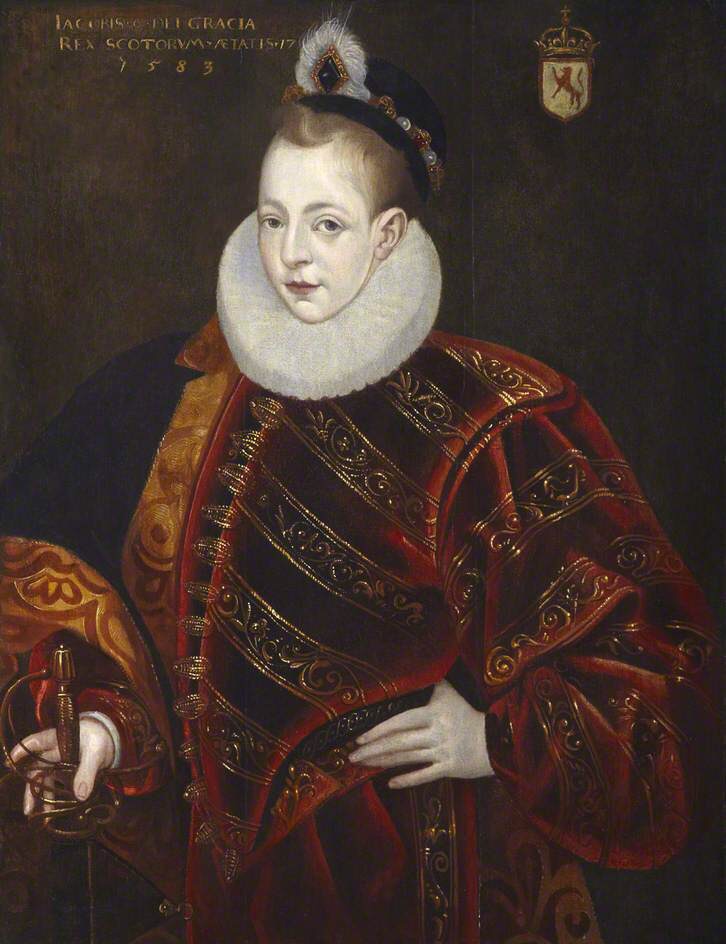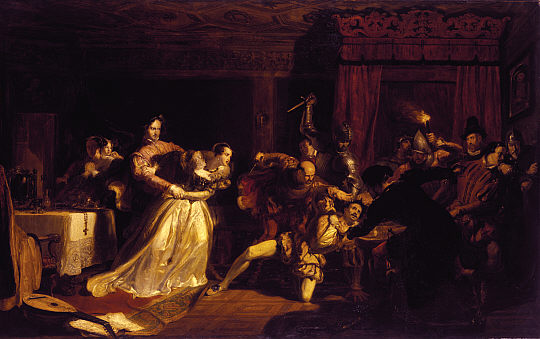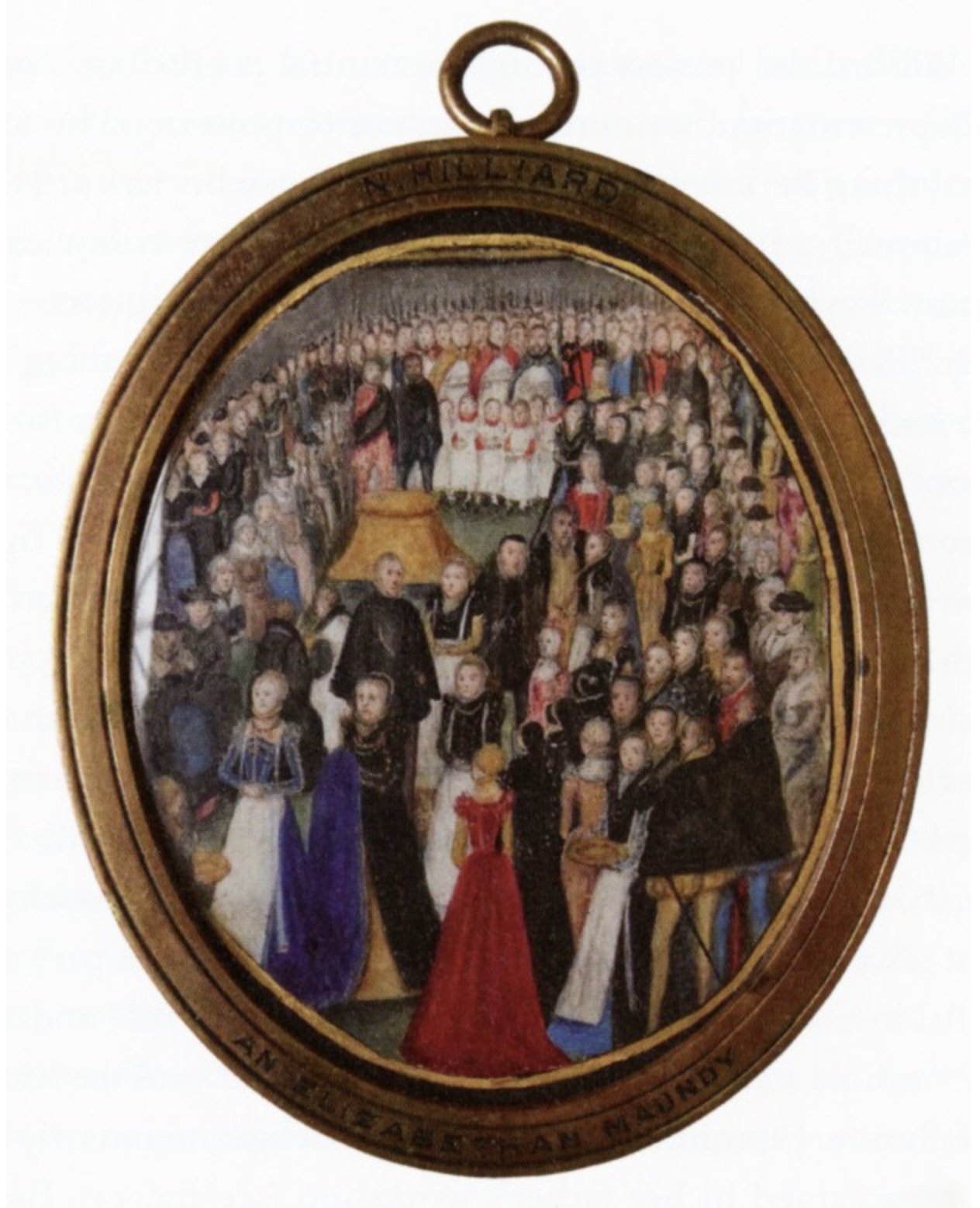|
Jewels Of James VI And I
James VI and I (1566–1625), King of Scotland from 1567, and King of England from 1603, had a large collection of jewels. Many were inherited from his mother Mary, Queen of Scots, or recovered from her supporters after the end of the Marian Civil War in 1573. James bought more jewels from goldsmiths. He wore them to emphasise his majesty, gave them as gifts to his favourites, commissioned their depiction in his portraits, and occasionally pawned them with goldsmith-financiers to fund his rule. At the Union of Crowns in 1603, James obtained the jewels of the English monarchy. James favoured hat jewels set with large precious stones. Jewels throughout a reign Anthony Standen (spy), Anthony Standen, an English servant of James' father Henry Stuart, Lord Darnley, wrote that Mary, Queen of Scots, showed him James in his cradle at Edinburgh Castle. The infant Prince was asleep, a cross of diamonds fixed on his breast. Childhood at Stirling Castle After Accession and Coronation A ... [...More Info...] [...Related Items...] OR: [Wikipedia] [Google] [Baidu] [Amazon] |
Portrait Of King James I & VI (1618-1620)
A portrait is a painting, photograph, sculpture, or other artistic representation of a person, in which the face is always predominant. In arts, a portrait may be represented as half body and even full body. If the subject in full body better represents personality and mood, this type of presentation may be chosen. The intent is to display the likeness, personality, and even the mood of the person. For this reason, in photography a portrait is generally not a snapshot, but a composed image of a person in a still position. A portrait often shows a person looking directly at the painter or photographer, to most successfully engage the subject with the viewer, but portrait may be represented as a profile (from aside) and 3/4. History Prehistorical portraiture Plastered human skulls were reconstructed human skulls that were made in the ancient Levant between 9000 and 6000 BC in the Pre-Pottery Neolithic B period. They represent some of the oldest forms of art in the Middle East ... [...More Info...] [...Related Items...] OR: [Wikipedia] [Google] [Baidu] [Amazon] |
Edinburgh Castle
Edinburgh Castle is a historic castle in Edinburgh, Scotland. It stands on Castle Rock (Edinburgh), Castle Rock, which has been occupied by humans since at least the Iron Age. There has been a royal castle on the rock since the reign of Malcolm III of Scotland, Malcolm III in the 11th century, and the castle continued to be a royal residence until 1633. From the 15th century, the castle's residential role declined, and by the 17th century it was principally used as a military garrison. Its importance as a part of Scotland's national heritage was recognised increasingly from the early 19th century onwards, and various restoration programmes have been carried out over the past century and a half. Edinburgh Castle has played a prominent role in History of Scotland, Scottish history, and has served variously as a Palace, royal residence, an arsenal, a treasury, a national archives, national archive, a Mints of Scotland, mint, a prison, a military fortress, and the home of the Honou ... [...More Info...] [...Related Items...] OR: [Wikipedia] [Google] [Baidu] [Amazon] |
Holyrood Palace
The Palace of Holyroodhouse ( or ), commonly known as Holyrood Palace, is the official residence of the British monarch in Scotland. Located at the bottom of the Royal Mile in Edinburgh, at the opposite end to Edinburgh Castle, Holyrood has served as the principal royal residence in Scotland since the 16th century, and is a setting for state occasions and official entertaining. The palace adjoins Holyrood Abbey, and the gardens are set within Holyrood Park. The King's Gallery, Edinburgh, King's Gallery was converted from existing buildings at the western entrance to the palace and was opened in 2002 to exhibit works of art from the Royal Collection. Charles III, King Charles III spends one week in residence at Holyrood at the beginning of summer, where he carries out a range of official engagements and ceremonies. The 16th-century historic apartments of Mary, Queen of Scots, and the State Apartments, used for official and state entertaining, are open to the public throughout ... [...More Info...] [...Related Items...] OR: [Wikipedia] [Google] [Baidu] [Amazon] |
Thomas Thomson (advocate)
Thomas Thomson Fellow of the Royal Society of Edinburgh, FRSE FSA Scot (10 November 1768 – 2 October 1852) was a Scottish advocate, antiquarian and archivist who served as Principal Clerk of Session (1828–1852) and as secretary of the literary section of the Royal Society of Edinburgh (1812–20). Life Thomas Thomson was born in Dailly manse on 10 November 1768, the eldest son of Rev Thomas Thomson, minister of Dailly in Ayrshire, and his second wife, Mary, daughter of Francis Hay. John Thomson of Duddingston, John Thomson was a younger brother. After attending the parish school of Dailly, he entered the University of Glasgow at age 13, where he graduated with an MA on 27 April 1789. He attended classes in theology and law at the University of Edinburgh from 1789 to 1791. He passed the Scottish bar as an advocate on 10 December 1793. His early Edinburgh address was 19 North Castle Street. Here he was a neighbour and close friend to Walter Scott, at that time also a fellow a ... [...More Info...] [...Related Items...] OR: [Wikipedia] [Google] [Baidu] [Amazon] |
Elizabeth I
Elizabeth I (7 September 153324 March 1603) was List of English monarchs, Queen of England and List of Irish monarchs, Ireland from 17 November 1558 until her death in 1603. She was the last and longest reigning monarch of the House of Tudor. Her eventful reign, and its effect on history and culture, gave name to the Elizabethan era. Elizabeth was the only surviving child of Henry VIII and his second wife, Anne Boleyn. When Elizabeth was two years old, her parents' marriage was annulled, her mother was executed, and Elizabeth was declared royal bastard, illegitimate. Henry Third Succession Act 1543, restored her to the line of succession when she was 10. After Henry's death in 1547, Elizabeth's younger half-brother Edward VI ruled until his own death in 1553, bequeathing the crown to a Protestant cousin, Lady Jane Grey, and ignoring the claims of his two half-sisters, Mary I of England, Mary and Elizabeth, despite statutes to the contrary. Edward's will was quickly set aside ... [...More Info...] [...Related Items...] OR: [Wikipedia] [Google] [Baidu] [Amazon] |
New Year's Day Gift (royal Courts)
At the Tudor and Stuart royal courts in Britain it was traditional to give gifts on New Year's Day, on 1 January. Records of these gift exchanges survive, known as "gift rolls", and provide information about courtiers and their relative status. A similar custom at the French court was known as the ''étrenne''. Historians often analyse these gift economy, gift economies following the ideas of the anthropologist Marcel Mauss and Bronisław Malinowski's description of the Kula ring. Gifts and status Margaret of Anjou and Elizabeth of York gave and received jewels and plate as New Year's Day gifts. The value of the plate given was calibrated to match the rank, status, and standing of the courtier. While gold plate might not always have been more valued than silver, gem-set jewellery seems to have been a token of special royal favour. In 1504, James IV of Scotland gave Margaret Dennet, an English servant of his queen consort Margaret Tudor, a gold chain with a figure of Saint Andrew w ... [...More Info...] [...Related Items...] OR: [Wikipedia] [Google] [Baidu] [Amazon] |
Gordon Donaldson
Gordon Donaldson (13 April 1913 – 16 March 1993) was a Scottish historian. Life He was born in a tenement at 140 McDonald RoadEdinburgh and Leith Post Office Directory, 1912 off Leith Walk in northern Edinburgh on 13 April 1913 the son of Rachel Swan and Magnus Donaldson. He was of Shetland descent. Donaldson attended Broughton Elementary School (adjacent to his home) and then the Royal High School of Edinburgh (1921–31), before being awarded a scholarship to study at the University of Edinburgh. He also supplemented his income by undertaking some tutoring. After graduating in 1935 with a first-class Honours Degree in History ( MA), he gained his PhD in 1938 at the Institute of Historical Research in London, where he also won the David Berry Prize from the Royal Historical Society. Donaldson also has a DLitt degree. After working as an archivist at the General Register Office for Scotland 1938–1947, he was appointed to a lectureship in Scottish History at the ... [...More Info...] [...Related Items...] OR: [Wikipedia] [Google] [Baidu] [Amazon] |
Mungo Brady
Mungo Brady or Brydie or Brand was an Edinburgh goldsmith, regarded as a King's man in the civil war, he was appointed goldsmith to James VI of Scotland. Career Brady was accepted as a "free man" of the Edinburgh craft of goldsmiths on 15 May 1561, as were David Denniestoun, Henry Thomson, and Gavin Freithman. Brady and other goldsmiths had to make a demonstration piece, undergo a verbal examination, and pay a fee known as an "upset". He was active in the craft, contributing to charity, working in some years as one of four masters supporting the Deacon, and as a "stentar" gathering contributions of money for taxes and dues owed by craft members. Brady was made a burgess of Edinburgh in July 1562, and it was recorded that his father was a burgess and goldsmith. Burgh council In 1568, Mungo Brady was involved in arrangements made by Edinburgh burgh council for paying John Knox's rent for his lodging, known as "hous maill". In 1571, during the conflict known as the Marian Civil W ... [...More Info...] [...Related Items...] OR: [Wikipedia] [Google] [Baidu] [Amazon] |
Amulet
An amulet, also known as a good luck charm or phylactery, is an object believed to confer protection upon its possessor. The word "amulet" comes from the Latin word , which Pliny's ''Natural History'' describes as "an object that protects a person from trouble". Anything can function as an amulet; items commonly so used include statues, coins, drawings, plant parts, animal parts, and written words. Amulets which are said to derive their extraordinary properties and powers from magic or those which impart luck are typically part of folk religion or paganism, whereas amulets or Sacramental, sacred objects of Organized religion, formalised mainstream religion as in Christianity are believed to have no power of their own without faith in Jesus and being blessing, blessed by a clergyman, and they supposedly will also not provide any preternatural benefit to the bearer who does not have an Disposition#Religion, appropriate disposition. Talisman and amulets have interchangeable meanings. ... [...More Info...] [...Related Items...] OR: [Wikipedia] [Google] [Baidu] [Amazon] |
Glossopetrae
Sharks continually shed their teeth; some Carcharhiniformes shed approximately 35,000 teeth in a lifetime, replacing those that fall out. There are four basic types of shark teeth: dense flattened, needle-like, pointed lower with triangular upper, and non-functional. The type of tooth that a shark has depends on its diet and feeding habits. Sharks are a great model organism to study because they continually produce highly mineralized tissues. Sharks continually shed their teeth and replace them through a tooth replacement system. Through this system, sharks replace their teeth relatively quickly with replacement teeth that are ready to rotate because their teeth often get damaged while catching prey. They will replace teeth that are broken and young sharks can even replace their teeth weekly. Although sharks constantly shed their teeth, factors such as water temperature affect the turnover rate. While warmer water temperatures produced faster rates, cold water temperatures slowe ... [...More Info...] [...Related Items...] OR: [Wikipedia] [Google] [Baidu] [Amazon] |






